Gallery Network
7 Questions for Approximately Blue’s Founders on Operating in a Post-Brick-and-Mortar Art World
Focusing on fine art prints and building relationships, Approximately Blue is at the forefront of a new way of doing things.
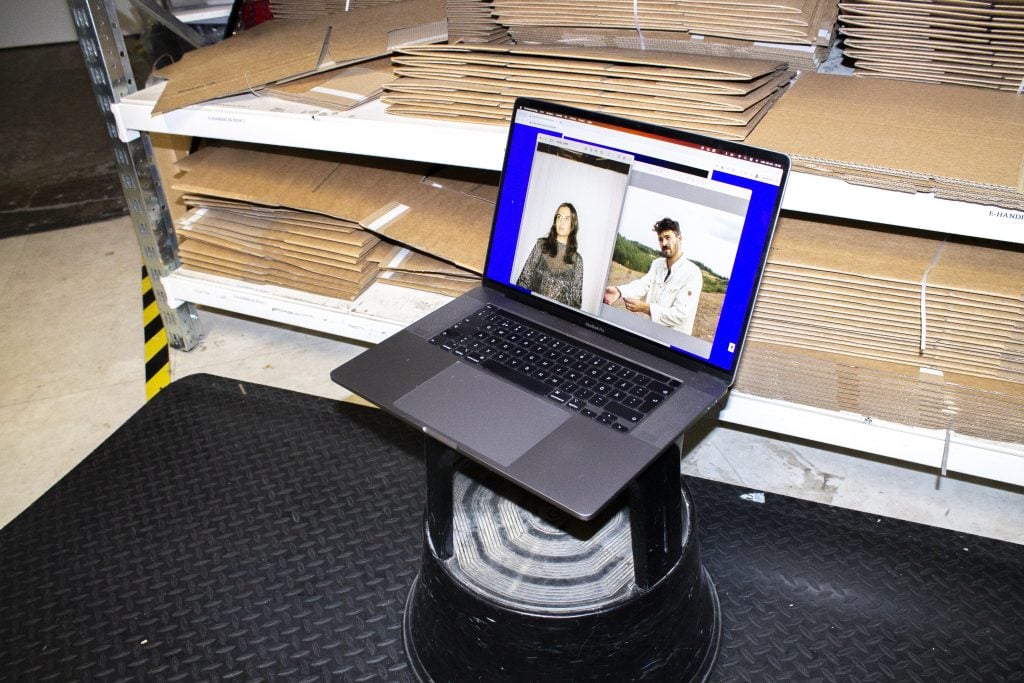
Focusing on fine art prints and building relationships, Approximately Blue is at the forefront of a new way of doing things.

Artnet Gallery Network

Independent art brokerage and collection management service Approximately Blue was founded by François-Luc Giraldeau and Emily Johnson out of a desire to leverage their respective experiences and passions. Since it launched in 2018, the brand has carved out a unique place for itself within the art world landscape, adapting to the changing needs and priorities of clients and collaborators, and developing a speciality in primary market, blue-chip fine art prints. Part and parcel of this specialty has been the development of foundational relationships with artists and master printmakers themselves, offering Approximately Blue the capacity to access works that can’t be found elsewhere.
Since its founding, Approximately Blue has expanded to offer a wide range of additional and in-demand services and opportunities—from crafting editorial content and exhibition curation to press relations and e-commerce operations—positioning it to be a new, comprehensive model within the online sphere.
We caught up with Giraldeau and Johnson to learn more about what inspired the endeavor and how they’re innovating within the field.
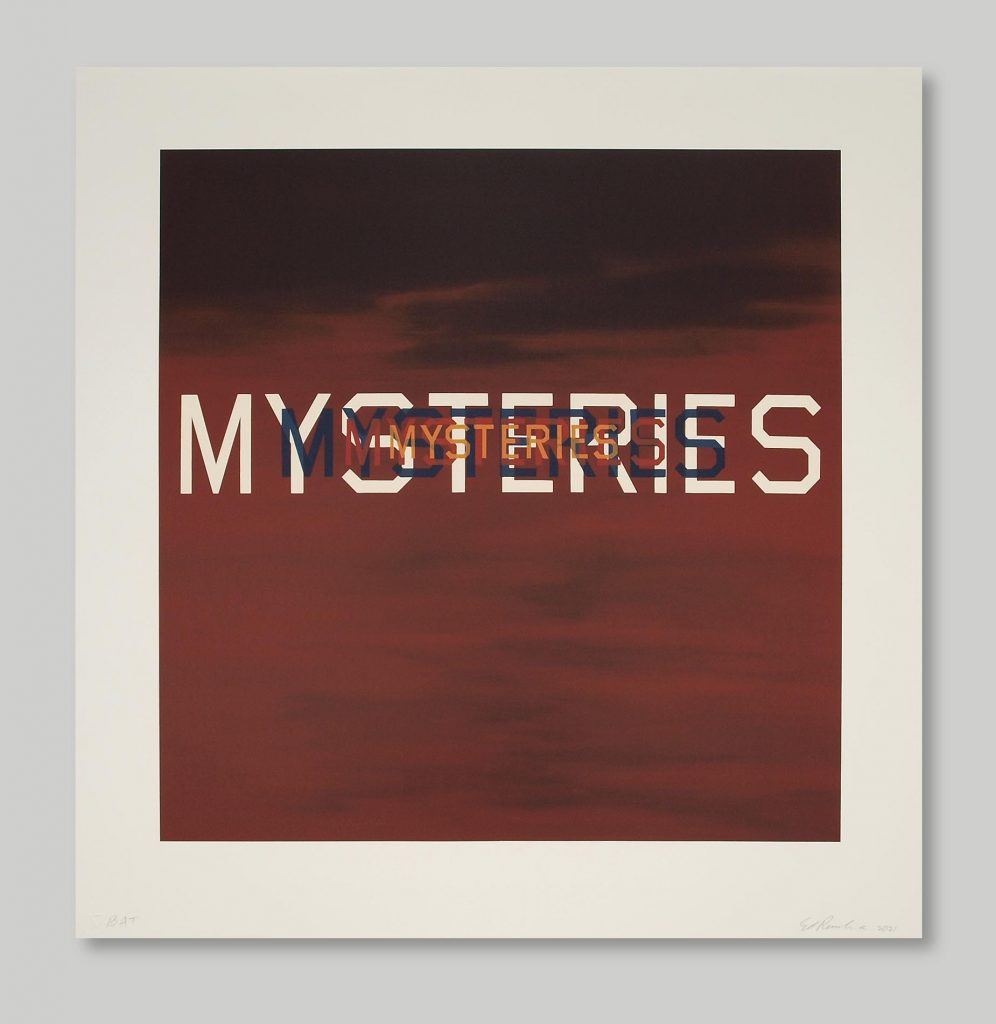
Ed Ruscha, Mysteries (2021). Courtesy of Approximately Blue.
Tell us a bit about your backgrounds. What motivated you to establish Approximately Blue?
François-Luc Giraldeau: I was trained as an architect, but I’ve always had a soft spot for printed matter. I believe my interest began with a desire to delve deeper into the concept of architectural representation as a finality. I longed to fetishize images, grew bored of “real-life” expectations, and yearned for utopian potential and speculative appeal. Also, my father, a master printmaker in Montreal, worked with some of Quebec’s most celebrated painters on limited-edition prints. As a child, I was charmed by the self-effacing aspects of his craft, often overshadowed by the limelight, yet always in pursuit of technical perfection.
In 2017, Emily and I met at Phaidon Press in New York. I was making books, while she was already navigating the art sales world. We devoted countless hours to brainstorming, exploring how we could join forces and carve out a livelihood that would allow us to bring out the best in each other. In an almost divine twist of fate, Ed Ruscha’s master printmaker approached us, asking if we would be interested in promoting his work and personal collection. We flew to Minneapolis to meet him in his studio, formulated a plan of action en route, and have been building upon that foundation ever since.
Emily Johnson: I began my career at Artspace, a sister company of Phaidon, where I initially worked as a client services manager. Selling felt like second nature to me, swiftly driving me up the ranks to the role of art advisor. This position allowed me the opportunity to engage with organizations, artists, and galleries on a global scale. It was during these interactions that Steve (from Vermillion Editions Limited) and I, both Minnesota natives, discovered our shared background, sparking an authentic connection between us. Soon after, as Francois (affectionately known as “Frenchy”) mentioned, the concept of Approximately Blue (AB) was born. We realized we shouldn’t delay in creating something meaningful together; thus, we embarked on a journey to pour our hearts and souls into our shared vision.
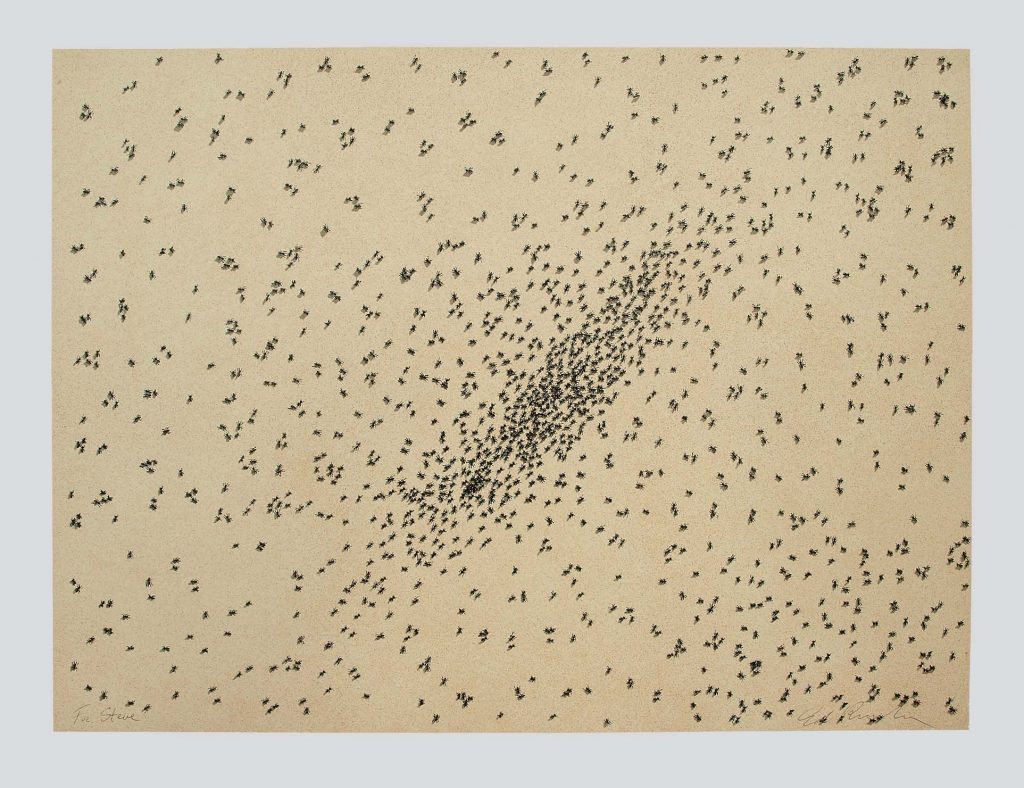
Ed Ruscha, Insect Slant (1972). Courtesy of Approximately Blue.
What are some key specifics that set Approximately Blue, a multi-hyphenate endeavor, apart in the field?
FLG: AB’s brand is deeply intertwined with our personalities. Both Emily and I are highly adaptable individuals, constantly striving to expand our skill set. We’ve always sought to leverage our respective backgrounds, skills, and traits, as well as our understanding of the art market, to devise innovative strategies that drive consumer demand and boost sales for our clients.
In the beginning, our sole focus was on developing rich editorial content about the artworks we offered. Our aim was to promote a non-intimidating approach, which we hoped would resonate with a younger demographic of digital natives, based on continuous communication and genuine conversation. However, since its inception, AB has broadened its operational scope, evolving into a fully-fledged content creation house that now provides strategic counsel and comprehensive communication solutions to cultural institutions and creators of all kinds.
We’re quite proud of our status as “professional dabblers.” We believe people appreciate working with us because we enjoy pushing the boundaries of our assigned tasks. We take it upon ourselves to learn new things, so our clients don’t have to. Personally, I fear complacency; the thought of being a one-trick pony gives me so much anxiety.
EJ: One of our primary motivations for working with prints and collaborating with master printmakers is the opportunity to disseminate valuable information to our clients. The confusion surrounding prints is widespread. The term “print” is often used interchangeably to describe mass-produced, low-value reproductions, which can be disheartening for both artists and collectors. However, it’s important to recognize that prints encompass a spectrum of original multiples created through a range of intricate techniques. They represent a dynamic medium that bridges accessibility with artistic expression. By promoting awareness and understanding of prints, we contribute to a richer and more informed appreciation of the art form.
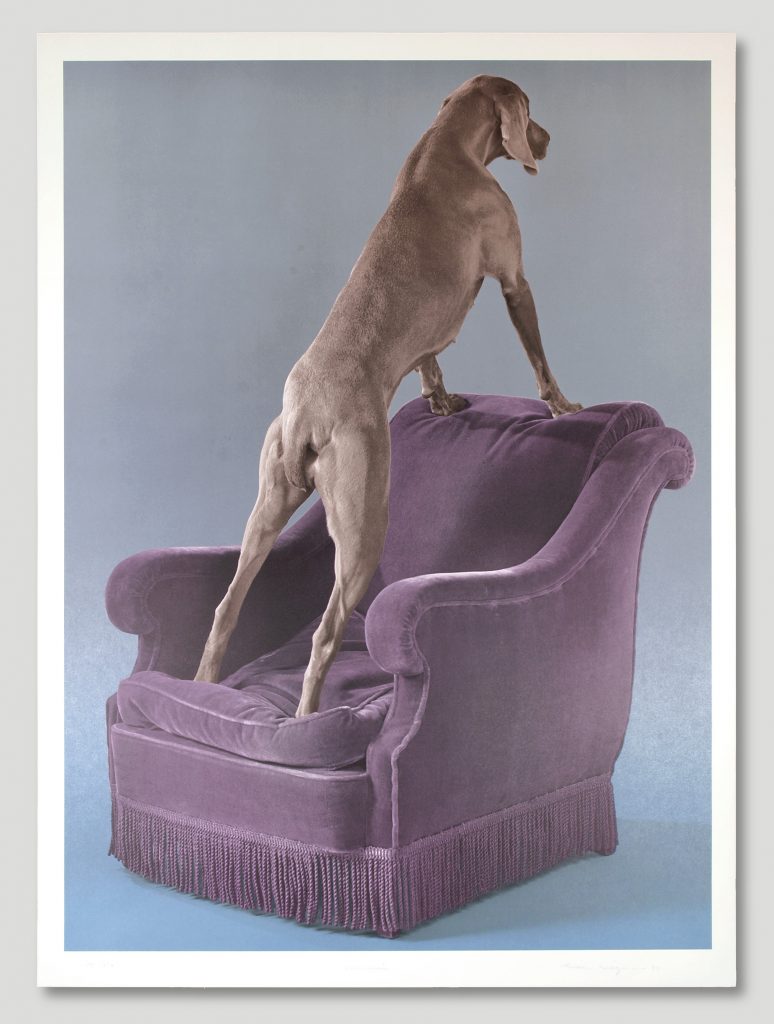
William Wegman, Overview (1993). Courtesy of Approximately Blue.
Do you have any perennial advice for collectors who are either new to collecting or are just starting to shape their collection?
FLG: In a nutshell…
How do you approach working with a new client?
FLG: At the core of our day-to-day operations, we function as both brokers and dealers. This means our clients are as likely to buy as they are to sell. We onboard new clients on an almost daily basis.
On Monday, we could be assisting a new master printmaker in managing, promoting, and selling their work. On Tuesday, we might be putting together an exhibition for a new artist who is still striving to make a living from their art, in light of our strong commitment to promoting the work of tomorrow’s most sought-after hopefuls and introducing emerging art to new audiences. On Wednesday, we could act as consultants to a wealthy baby-boomer seeking to liquidate some assets to make room on their walls for what’s currently trending. On Thursday, we might do the same thing with a 20-something tech C.E.O. looking to start collecting art based solely on what they believe is “fire.” And on Friday, we could be pitching a selection of prints to the board of a new hospital seeking to infuse their lobby with meaningful art.
The profile of our clients is incredibly diverse, but they all have one thing in common: they work with AB because they feel comforted in their decision, supported in the process, listened to, and receive intelligent and comprehensible information on the art they’re interested in. They appreciate our transparency and the candid nature of our exchanges. The key to success when working with a new client is simply to care. Know as much as you can and do everything—from the most seemingly insignificant to the most nerve-wracking tasks—to the best of your abilities, and you should be just fine. We take the time to speak to everyone the way we would like to be spoken to, and it’s proven to be incredibly pleasant (and lucrative) thus far.
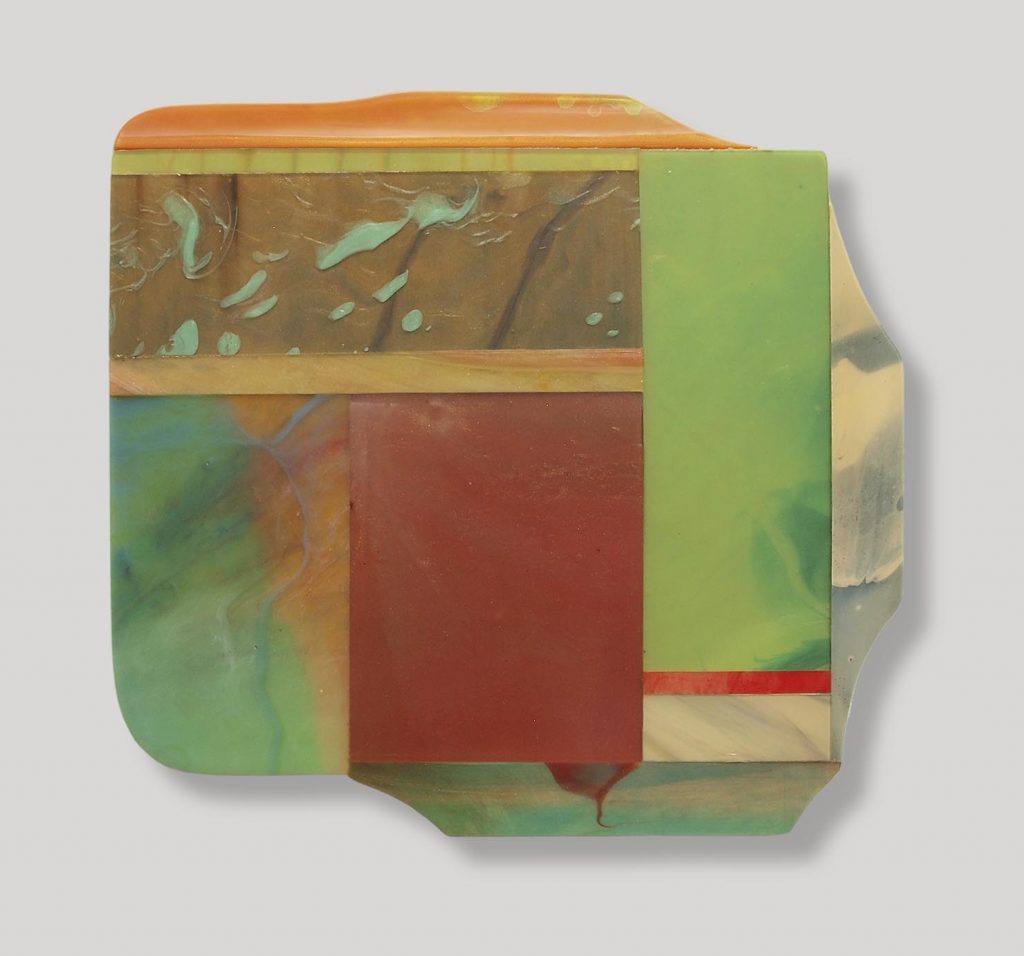
Sam Gilliam, Echo XV (1995). Courtesy of Approximately Blue.
Are there any trends in the “post-brick-and-mortar” art space that you’ve observed since Approximately Blue’s founding that you find particularly exciting or intriguing? How would you characterize the response to Approximately Blue thus far? And looking to the future, how do you see Approximately Blue evolving or growing?
FLG: While we didn’t coin the term “post-brick-and-mortar,” it has always been deeply ingrained in AB’s identity, positioning, and messaging strategy. We flourish in the digital era because we had the audacity to brand ourselves as such from the beginning. There was a time when we had to send our driver’s licenses as a form of collateral because established collectors were skeptical of an organization like ours that didn’t have a physical storefront. It took them a few years to realize that this model was, in fact, quite archaic. The idea of worrying about rent for desks and a backroom for our inventory seemed unnecessarily clunky to us. Besides, both Emily and I divide our time among several locations worldwide. The agile nature of the model we’ve chosen to adopt has granted us immense freedom and minimal limitations, aside from the extra effort required to gain the credibility necessary to advise on and transact in primary market, blue-chip fine art prints.
The only real “trend” that stands out to me is the fact that collectors are no longer as wary of us as they were initially; quite the contrary, in fact. They appreciate that we’re at the forefront of emerging attitudes, values, and industries.
The future for AB is undoubtedly bright. Don’t tell anyone but our next (secret) project is actually the establishment of our own publishing house to produce and distribute our very own prints. Once again, we’ll collaborate with the best to make this happen, ensuring that our endeavors are relevant and can contribute significantly to an already saturated market. But at this stage, our goal is to maintain our focus on proactive, editorially driven outreach campaigns and private offers, and provide services that “reach beyond” while shedding light on the subtleties and intricacies of the printed matter.
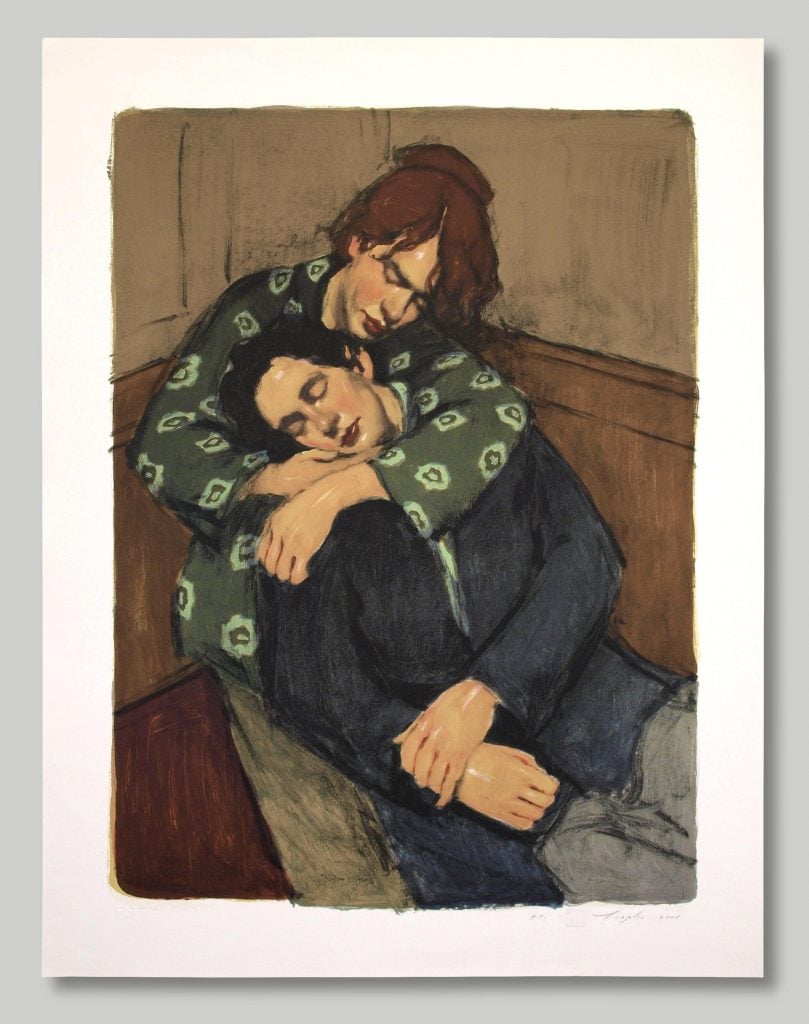
Malcolm Liepke, In Her Arms (2001). Courtesy of Approximately Blue.
Can you tell us about any recent or forthcoming sale of works you find particularly exciting?
FLG: Indeed, we do! We currently offer a 25 percent discount on these amazing works by Malcolm Liepke, an elusive figure who has managed to stay out of the spotlight since the mid-1980s, despite dominating critical discussions of contemporary art. If you’re not yet familiar, Liepke is a largely self-taught American artist whose works are unique in their voyeuristic yet empathetic depiction of female nudes, often lost in contemplation. Liepke’s work transports viewers to a bygone era of late-night haunts, couples lingering in smoky rooms, and intimate private moments. In the early 2000s, Liepke collaborated with master printmaker—and fellow Minnesotan—Steven M. Andersen to produce mono-prints of some of his most evocative and heart-rending paintings. Andersen lent his years of experience to create figurative pieces of great expressive depth and brilliant technical execution. To this day, the majority of his prints are still stored, safely tucked away, in the studio of the master printmaker.
EJ: For a bit of background on Vermillion Editions, Steven M. Andersen came of age during the American printmaking renaissance of the 1970s. Steve, once dubbed the enfant terrible of the fine art printing industry, has amassed a remarkable track record of producing limited edition pieces with some of the most sought-after American artists of the 20th and 21st centuries. A self-described “juvenile delinquent,” Steve’s work—though a product of the 1960s counterculture of sex, drugs, and rock ‘n’ roll—is both meticulous and controversial, mindful, and completely unpredictable. Approximately Blue works in close collaboration with Andersen, exclusively representing his work, while also managing his personal art collection. It’s a true testament to his influence and legacy.
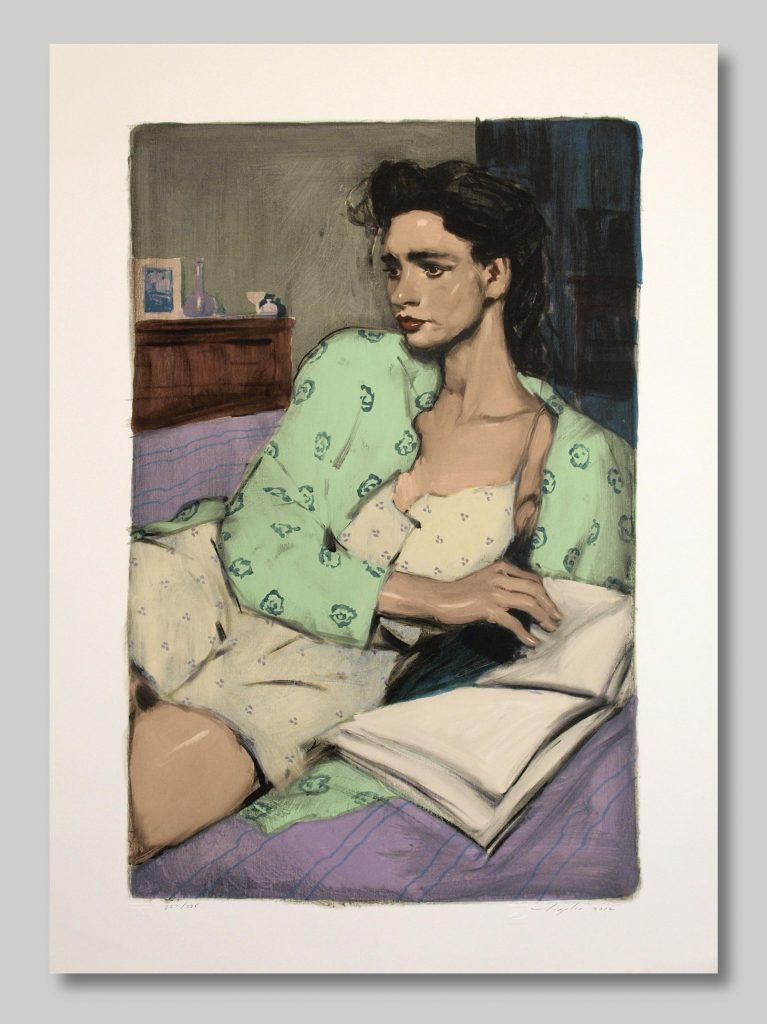
Malcolm Liepke, Reading in Bed (2001). Courtesy of Approximately Blue.
Learn more about Approximately Blue services here.